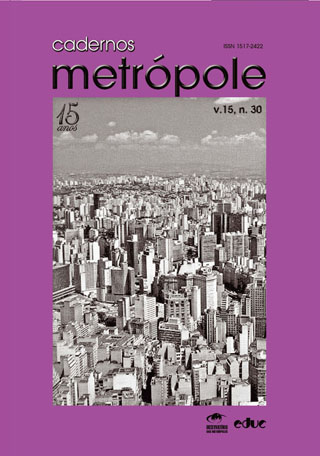Commuting in the macrometropolis of São Paulo: differentiation and socio-spatial complementariness
Keywords:
demography, population mobility, macrometropolis of São Paulo, urbanization, metropolitan regionAbstract
The main objective of this article is to make a diagnosis of the trends and characteristics of commuting in the so-called Macrometrópole Paulista (Macrometropolis of São Paulo), using the information available in the 2000 and 2010 Censuses. The knowledge of the current situation and of the evolution of this phenomenon may greatly contribute to the evaluation of the process of socio-spatial interaction and complementariness that develops among urban centers, where the new forms of location both of economic activity and of the population in general are already clear. The study of this phenomenon, therefore, contributes to diagnose the process of structuring of these spaces and, above all, to mitigate deficiencies in housing, transport, health and education policies, among others.Metrics
Metrics Loading ...
Downloads
How to Cite
Cunha, J. M. P. da, Stoco, S., Dota, E. M., Negreiros, R., & Miranda, Z. A. I. de. (2013). Commuting in the macrometropolis of São Paulo: differentiation and socio-spatial complementariness. Cadernos Metrópole, 15(30), 433–459. Retrieved from https://revistas.pucsp.br/index.php/metropole/article/view/17490
Issue
Section
Artigos
License
A revista não tem condições de pagar direitos autorais nem de distribuir separatas.
O Instrumento Particular de Autorização e Cessão de Direitos Autorais, datado e assinado pelo(s) autor(es), deve ser transferido no passo 4 da submissão (Transferência de Documentos Suplementares). Em caso de dúvida consulte o Manual de Submissão pelo Autor.
O conteúdo do texto é de responsabilidade do(s) autor(es).


